MacBook Overheating - Causes, Solutions and Prevention
Is your MacBook heating up like a toaster and the fan sounds like a jet engine? You're not alone. Whether you have an older Intel model or one of the newer M1, M2, M3, or M4 chips, overheating can affect performance and longevity. This comprehensive guide covers everything from quick fixes to professional solutions.

🚀 Quick Fixes to Try Now
- Quit resource-heavy apps: Check Activity Monitor (⌘ + Space, type "Activity Monitor")
- Reset SMC: Shut down → Press Shift-Control-Option + Power for 10 seconds
- Update macOS: Apple Menu → System Settings → Software Update
- Remove from soft surfaces: Use on hard, flat surfaces only
- Check for malware: Run Malwarebytes or similar
Signs of MacBook Overheating
You can recognize an overheating MacBook by these symptoms:
- Fans running permanently at maximum - even under low load
- System becomes slow - due to thermal throttling (automatic performance reduction)
- Sudden crashes or restarts - as a protective measure
- Battery life drastically shortens - due to increased energy consumption
- Graphics errors or screen dropouts - with GPU overheating
- kernel_task high CPU usage - macOS thermal protection kicking in
- Case too hot to touch comfortably - especially near CPU/GPU area
💡 Sometimes It's Normal
Not all heat is cause for concern. Some models run naturally hot. Best example: the 17" MacBook Pro 2010 with Core i7 - according to Engadget testing, it easily reached over 100°C. Solution: don't use on your lap.
⚠️ Important for M1-M4 Models
For models with M1-M4 processors, overheating is very unusual. These chips are extremely efficient. If they regularly get hot or fans run at full speed, something is usually wrong and should be checked.
The 5 Most Common Causes of MacBook Overheating
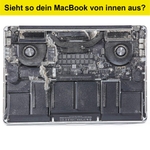
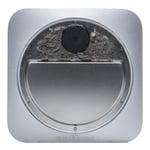
1. Dusty Fans and Cooling Fins
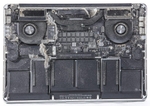
Dust is enemy #1 of MacBook cooling. It enters through the ventilation slots and settles inside. Over time, so much dust accumulates that:
- The fans become blocked and can no longer work effectively
- The cooling fins clog and hinder heat dissipation
- The airflow is drastically reduced
- The dust acts like insulation and traps heat
- Fibers and lint collect in ventilation slots
⚠️ Cigarette Smoke: Double Danger
Cigarette smoke enters the MacBook and forms a sticky layer that attracts and binds dust even more strongly. Warning: Apple may refuse warranty claims if your device shows signs of cigarette smoke damage!
Solution: Professional cleaning every 6-12 months is essential. This removes dust from fans, cooling fins, and the entire cooling system. We offer free cleaning inside and out once a year!
2. Harmful MacBook Cases
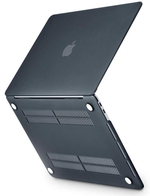
Many MacBook cases, especially those for the bottom, can paradoxically do more harm than good. The MacBook cools itself not only through the fans but also through the aluminum bottom plate.
The problem: Cases insulate the bottom plate and prevent natural heat dissipation. Heat accumulates between the case and MacBook and cannot escape.
Solution: Avoid bottom cases or use only those with special cooling openings. Learn more in our article about MacBook cases.
3. Working on Soft Surfaces

Many people like to work with their MacBook in bed or on the sofa. This often blocks the ventilation slots with pillows, blankets, or clothing.
The consequences:
- Fans cannot draw in fresh air
- Warm air cannot escape
- Heat builds up inside the MacBook
- Overheating is inevitable
- Textiles insulate and store heat instead of dissipating it
- Uneven surface can cause bending and port damage
- Static buildup from fabric friction can damage electronics
- Moisture buildup from body heat and breath
⚠️ Critical Within Minutes
A MacBook can reach critical temperatures over 80°C within just 5-10 minutes on a pillow. Intel MacBooks overheat faster than Apple Silicon (M1/M2/M3) models. MacBook Air models without fans are especially vulnerable and reach dangerous temperatures within minutes.
Solution: Always place your MacBook on a hard, flat surface. For bed or sofa, we recommend a laptop lap desk or a portable laptop stand with good ventilation.
4. Keyboard Cover During Use

Keyboard covers are practical for protection against dirt, but: The MacBook also cools itself through the keyboard, especially on MacBooks without or with weak fans.
The problem: If the keyboard cover remains on the keyboard while working, heat accumulates underneath and cannot escape. Additional problems:
- Display damage: Added thickness can pressure the display when closing and cause cracks
- Keys sticking: Due to heat and moisture under the cover
- Apple warns explicitly: Tolerances are very tight, warranty may be voided
- Particularly at risk: MacBook Pro 2016-2019 and MacBook Air 2018-2020 with Butterfly keyboard
❌ Display Repair Can Cost $400-800
Damage from keyboard covers is not covered by warranty. Display repair from excess pressure can cost $400-800. Better to invest in AppleCare+ or regular maintenance!
Solution: Use the keyboard cover only during transport. Remove it before working and store it in your carrying case.
5. Overload from External Monitors
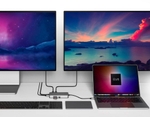
External monitors, especially high-resolution 4K displays, challenge the graphics card significantly. The GPU works at its limit and produces correspondingly much heat.
Additional strain from:
- Multiple external monitors simultaneously
- High-resolution displays (4K/5K)
- Graphics-intensive applications
- Video streaming or editing
Solution: A laptop cooler with external fans can effectively support cooling.
Other Causes of MacBook Overheating
Old Thermal Paste
The thermal paste between CPU/GPU and heat sink dries out over time. For MacBooks older than 3 years, it should be renewed.
Defective Fans
Fans can slow down or fail completely due to wear. Replacement is then unavoidable.
Software Problems
Background processes, malware, or faulty apps can permanently stress the CPU and lead to overheating.
The kernel_task Process
What is kernel_task? A system process in macOS that activates during overheating. It artificially "steals" CPU time to reduce processor usage and lower temperature.
When does kernel_task activate?
- At CPU temperatures above 80°C
- With blocked ventilation slots
- With defective temperature sensors
- With excessive ambient temperature
How to check kernel_task:
- Open Activity Monitor (Applications → Utilities)
- Search for "kernel_task"
- Check CPU usage (over 50% is critical)
- If usage is high: immediately place MacBook on solid surface
Temperature Ranges and Critical Values
Normal Operating Temperatures:
- CPU idle: 40-50°C
- CPU normal use: 50-70°C
- CPU intensive use: 70-85°C
- Critical temperature: Above 95°C (automatic shutdown)
What Happens During Overheating:
- At 70-80°C: Fans spin at maximum speed
- At 80-90°C: Thermal throttling kicks in
- At 90-95°C: Massive performance reduction
- At 95°C+: Automatic safety shutdown
Intel vs. Apple Silicon: Different Heat Profiles
Intel MacBooks (Pre-2020)
- Higher power consumption (15-45W typical)
- More heat generation
- Active cooling essential
- Thermal throttling common under load
M1/M2/M3/M4 MacBooks (2020+)
- Lower power consumption (10-20W typical)
- More efficient architecture
- MacBook Air: No fan (passive cooling)
- MacBook Pro: Fan rarely needed
- Better sustained performance
- If these models overheat regularly, something is wrong
Immediate Actions When Overheating
If your MacBook overheats, these immediate measures help:
- Place MacBook on hard, flat surface - for optimal air circulation
- Check Activity Monitor - identify and quit CPU-hungry processes
- Reset SMC - can fix fan problems
- Close unnecessary apps - reduces system load
- Work in cool environment - use air conditioning or fan
- Shut down MacBook - in extreme heat for cooling
Professional Solutions
For long-term solutions, we offer professional services:
- Complete cooling system cleaning - removal of all dust deposits
- Thermal paste renewal - for optimal heat transfer
- Fan replacement - for defective or worn fans
- Logicboard diagnosis - for heat damage
- Fan control optimization - for better cooling performance
🎉 Free Annual Cleaning!
You can visit us anytime for free fan and heat sink cleaning - just drop by, no appointment needed. We offer free cleaning inside and out once a year!
📍 Address: Leverkusenstraße 3, Hamburg
⏰ Hours: Mon-Fri 10:00 AM-7:00 PM
Not in Hamburg?
No problem - just send us your MacBook and use the coupon code: BLOG.
We'll clean it and send it back for free with our free DHL shipping label!
📞 Contact: +49-40-228643240
Long-term Damage from Overheating
Don't ignore overheating! What starts as a small problem can lead to expensive repairs:
- Graphics chip defects - solder joints break from heat
- CPU damage - rare, but possible with extreme overheating
- Battery degradation - heat accelerates wear
- Hard drive/SSD failures - shortened lifespan
- Display damage - from heat exposure
Prevention Measures
How to prevent overheating from the start:
- Use laptop stand - for better air circulation
- Regular cleaning - professional every 6-12 months
- Choose proper workspace - no soft surfaces
- Keep software updated - prevents resource waste
- Identify resource-hungry apps - and replace if necessary
- Monitor ambient temperature - don't work in direct sunlight
When to Seek Professional Help
Contact us if:
- Fans constantly run at maximum - even under low load
- Case becomes burning hot - risk of burns
- Performance drops despite restart - persistent problems
- After liquid damage - corrosion possible
- Visible dust in vents - cleaning needed
- Unusual noises - defective fans possible
Our Overheating Diagnosis
Our professional service includes:
- Temperature monitoring - of all critical components
- Fan function test - speed and efficiency
- Thermal paste inspection - condition and renewal
- Cooling system cleaning - complete dust removal
- Logicboard diagnosis - detect heat damage
- Software analysis - identify resource-hungry processes
Temperature Monitoring Tools
- iStat Menus: Comprehensive system monitoring
- Intel Power Gadget: For Intel CPUs
- TG Pro: Professional temperature and fan control
- Macs Fan Control: Manual fan control (use with caution!)
- CoconutBattery: Battery temperature monitoring
MacBook Overheating? We Can Help!
Professional diagnosis and repair for overheating problems. Free fault analysis and transparent pricing.
Frequently Asked Questions (FAQ)
Why is my MacBook overheating?
The most common causes are dusty fans and cooling fins, blocked vents from soft surfaces or cases, old thermal paste, defective fans, or overload from external monitors and graphics-intensive applications.
How can I prevent MacBook overheating?
Use your MacBook on hard, flat surfaces, avoid heat-trapping cases, remove keyboard covers during use, have it professionally cleaned regularly, and use a laptop cooler if needed.
What damage can overheating cause?
Long-term overheating can lead to graphics chip defects, CPU damage, accelerated battery degradation, shortened SSD lifespan, and even display damage. Timely treatment is therefore important.
How often should I have my MacBook cleaned?
We recommend professional cleaning every 6-12 months, depending on usage intensity and environment. With heavy dust exposure or frequent use, more frequent cleaning may be beneficial.
How much does professional MacBook cleaning cost?
We offer free cleaning once a year! For additional cleanings, costs vary by model and contamination level. Contact us for an individual quote. The investment pays off as it prevents expensive consequential damage.
Does cigarette smoke void my Apple warranty?
Yes, Apple may refuse warranty claims if your MacBook shows signs of cigarette smoke damage. The smoke creates a sticky layer that attracts more dust and can damage components.